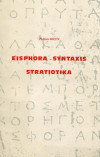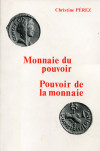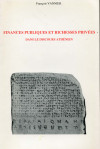
- Summary
-
In front of the current deregulation of the currency, linked to the weight of finance and the inadequacy of public regulation, voices are rising to claim to reinvent the currency, including through complementary currencies, time banks, credit circuits, mutual credit. There is also much talk of monetary innovation about the current phenomenon of cryptocurrency (bitcoin, stellar, ether, but also faircoin, far from the speculative dimension of bitcoin). In short, the currency remains at the heart of political debates.
These debates are mostly lacking in historical depth, since politicians and journalists rarely mention situations prior to the Bretton Woods Agreement (1944). This volume, born from a colloquium held at the Rendez-vous of the history of Blois in 2017 which associated economists and historians of the currency, has therefore the ambition to put the question in the long time, since Antiquity. It is indeed antiquity that saw the birth of the minted coin and, consequently, the creation of a monetary paradigm that remains dominant, whether it is the reference to the precious metal, the links maintained with the power sovereign, or the shape of the coins, taken up today by the bitcoin. - Contents
-
Introduction
Catherine <span style="font-variant: small-caps">Grandjean</span>
I- Les débuts de la monnaie antique
L’apparition de la monnaie frappée, invention ou innovation ? Bilan historiographique et enjeux historiques
Pierre-Olivier <span style="font-variant: small-caps">Hochard</span>
Entre innovation et tradition. Remarques sur le monnayage romain des origines à l’avènement de l’Empire
Arnaud <span style="font-variant: small-caps">Suspene</span>
Imiter, innover. L’adoption de la monnaie d’or frappée en Gaule celtique, iiie siècle avant n.è.
Sylvia <span style="font-variant: small-caps">Nieto-Pelletier</span>
Des « impériales grecques » aux « provinciales romaines ». Un concept ancien réinventé
Michel <span style="font-variant: small-caps">Amandry</span>
II- Innovations et résistances
Innovation et modernité du monnayage byzantin (fin ve-xve siècles)
Cécile <span style="font-variant: small-caps">Morrisson</span>
Quelques spécificités des monnayages médiévaux. Le seigneuriage et autres innovations au temps de Philippe le Bel
Marc <span style="font-variant: small-caps">Bompaire</span>
Les freins à l’innovation technologique dans la fabrication monétaire (Occident, Extrême-Orient) du xvie au xxe siècle
Yves <span style="font-variant: small-caps">Coativy</span>
Du monnayage au crypto-monnayage
Laurent <span style="font-variant: small-caps">Desmedt</span>, Odile <span style="font-variant: small-caps">Lakomski-Laguerre</span>
III- La petite monnaie
La petite monnaie des Grecs (ve-iiie siècles avant notre ère)
Catherine<span style="font-variant: small-caps">Grandjean</span>
Inventer de la monnaie pour les pauvres ou comment créer la monnaie fiduciaire (France, xvie-xviie siècles)
Jérôme <span style="font-variant: small-caps">Jambu</span>
Les petits billets de 1864 à 1879 : une innovation dangereuse, mais pour qui ?
Patrice <span style="font-variant: small-caps">Baubeau</span>
Le papier monnaie de petites dénominations émis par les provinces argentines entre 1890 et 2003
Bruno <span style="font-variant: small-caps">Theret</span>
Conclusions
Arnaud <span style="font-variant: small-caps">Manas</span>
- Author (s)
-
Catherine GRANDJEAN (edit. director)The book From Drachma to Bitcoin is multidisciplinary. Contributors are historians, economists and socio-economists specializing in money at various historical periods and in several geographical areas. Most of them are research professors or researchers at the CNRS. A. Manas, who wrote the conclusions, is Head of Historical Heritage of the Banque de France and researcher in economics attached to the University of Paris I.
- Readership
-
Historians, archaeologists, economists, numismatists, cultured public
- Reviews and press reviews
- Online
- Support (s)
-
Publié avec le concours de l’Institut des Sciences et Techniques de l’Antiquité (UFC – EA 4011) et CeTHIS EA 6298 (université de Tours)












